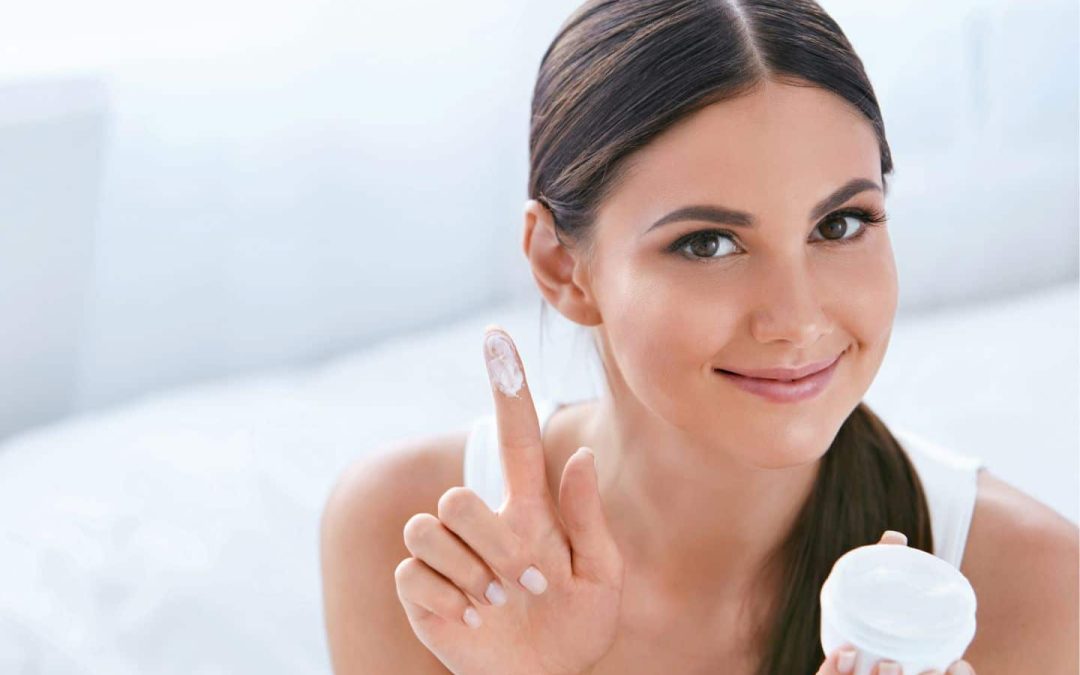When it comes to caring for your skin, more isn’t always better — and skin cycling proves it. Find out how this skin-care approach works, and whether Dr Wafaa recommends it.
If you’re on the skin-care side of Instagram or TikTok, chances are you’ve seen the words “skin cycling” floating around recently. Maybe you’ve noticed friends using the hashtag #skincycling in their posts, or heard it mentioned as part of influencers’ daily skin-care regimes. On TikTok, #skincycling is associated with 122.3M views, and overall, posts that mention skin cycling have garnered 3.5B views on the social media platform.
Clearly, skin cycling is popular, but what is this buzzy practice, and is it the step your skin-care routine is missing?
Despite its name, “skin cycling” is not a spin workout for your epidermis. Instead, it’s a term used to describe the way products are applied to the skin.
“Rather than applying the same products every day, when skin cycling, products are applied with ‘rest’ days,” Dr Wafaa explains, “its concept has been around for a while”.
Dermatologists have been recommending intermittent or alternating use of active ingredients for a long time, and Dr Wafaa have always been recommending a slow start to most of active topical skin products for years!
Dr Wafaa’s opinion:Instead of piling more products on top of each other, skin cycling encourages people to use products strategically so that they actually complement one another.
What is skin cycling?
Skin cycling is a skin-care routine that allows for “rest days” during the week, so that your skin can repair itself after using certain products thus helping in the prevention of irritation and inflammation.
As a rule of thumb, To get started with skin cycling, you’ll need:
1-An exfoliator (like glycolic acid or salycylic acid)
2-A retinoid (think retinol or retinaldehyde)
3-A moisturizer
With those ingredients in hand, it’s all a matter of timing.
The classic skin cycling regimen is a four-night cycle — the first is the exfoliation night, the second is a retinoid night, and the third and fourth are recovery nights, then you repeat the cycle.
There is other variations on the method, depending on how your skin responds.
How Skin Cycling Works
Here’s a night-by-night how-to:
Night No. 1: Exfoliation
On this night, you’ll cleanse and pat dry, then exfoliate, which takes off the dead skin cells from the surface layer of your skin
There’s a good reason for this step coming first: “Your other products will perform more effectively because they are able to penetrate more deeply into the skin in a controlled, predictable way.
Afterwards, you’ll want to moisturize. A quick warning, though: While some say exfoliation improves the look of their skin, if you do it incorrectly — too frequently, for example — it can lead to redness and irritation.
Dr Wafaa swears by chemical exfoliants, which she says are more gentle than physical scrubs.
Night No. 2: Retinoids
This night is focused on retinoids, which are vitamin A derivatives that can help reduce the appearance of fine lines and wrinkles
These include prescription medications, like tretinoin, and gentler, over-the-counter products, like retinol.
Retinoids are one of the powerful ingredients to include in your skin cycling routine, but they can be very irritating when you first introduce them, or if you have sensitive, reactive skin,
Before applying, be sure to cleanse and pat dry. For those especially sensitive to retinoids, it’s a good idea to first moisturize around sensitive areas, like under your eyes and in the corners of your nose, before putting the retinoid on. And if your skin is still feeling dry, you can moisturize again, on top of the retinoid.
Nights No. 3 and 4: Recovery
The recovery period, typically nights three and four, is the final step. On recovery nights, you hold off on the exfoliating acids and retinoids and give your skin a chance to recover
You’ll want to focus on nourishing your skin microbiome and repairing your skin barrier, so think about hydration and moisture, and avoid any irritating ingredients.
Cleanse your skin before applying a moisturizer, and for these nights you don’t have to pat dry — it’s fine to leave your skin a little damp.
You can also apply a hydrating serum before your moisturizer.Dr Wafaa’s Favourite? The daily hydrdrops from Obagi.
Now In practice, your cycle timing can depend on skin type, and your practitioner may suggest personalizing it further.
If you are experiencing sensitivity and irritation, you can increase your recovery nights, Or, if you are seasoned and well adjusted to your retinoid and want to dial up, you can omit one recovery night for a three-night cycle.
A Note on Frequency
As for how long you need to continue the practice, you can repeat and modify your skin-cycle regime over time. It can be a reset, but it can be used continuously depending on how your skin responds to the ‘active’ ingredients you are applying.
One good rule of thumb: When it comes to your routine, whether you’re skin cycling or otherwise, consistency is more important than frequency. Products are much more effective when used regularly, even if you’re not using them daily.
How Can Skin Cycling Benefit Your Skin?
Skin cycling devotees and dermatologists suggest the practice can have a number of benefits — You can have a look at our blog and see the benefits of skin cycling.
What Dr Wafaa Think About Skin Cycling?
For Dr Wafaa, the feedback has been overwhelmingly positive, Still, skin cycling may not be right for people who want big results. Most of the data that we have on the effectiveness of most types of ingredients is based on daily use so that you can think of skin cycling as your warm-up routine, says Dr. Wafaa
Dr Wafaa also advises shortening the cycle as your skin becomes tolerant — “there are a lot of people for whom one to two nights of a product per week is not enough to see results.”
That said, products are much more effective when used regularly (for example, on a cycle) than when used sporadically.
Dr Wafaa acknowledges that if people are able to get their skin adjusted to a stable and powerful retinoid (and don’t have irritation, blotchy patches, or sensitivity), skin cycling won’t offer many additional benefits. The issue, she says, is that many people can’t get to that point in the first place. “Most people, especially those with dry skin or sensitive skin, find it impossible to use a powerful, stable retinoid every night without experiencing dryness, irritation, and discomfort,”.
Ultimately, she adds, the point of skin cycling is to reap the benefits of your skin-care routine while dialling down the irritation that can happen when you overuse powerhouse products like exfoliating acids or retinol.
Who Should Try (and Who Should Avoid) the Skin Cycling Trend?
Skin cycling could be worth considering if you’re looking to add retinol, an exfoliant, or another potentially irritating product to your beauty routine.
Another group it may benefit? People with sensitive skin. If you have a skin condition like acne or rosacea, talk to your practitioner to personalize your skin-cycling regimen, especially if you’re taking prescription medication for your skin.
And as noted above, if you’re already applying a retinoid every night and find your skin is tolerating it well, then skin cycling may not give you as many benefits as you’d hoped.
Not sure if a skin-cycling routine is right for you? When in doubt, ask Dr Wafaa El Mouhebb and book your consultation at Dr Wafaa Clinic in Reading for your best course of action.
The Bottom Line
The concept of skin cycling isn’t new. Still, there’s a reason why it has become so popular now, as people have begun to realize that using more products doesn’t always equate to better or healthier skin.
“This is a less-is-more approach that works and gives you a structured schedule that makes intuitive sense,” says Dr Wafaa.

